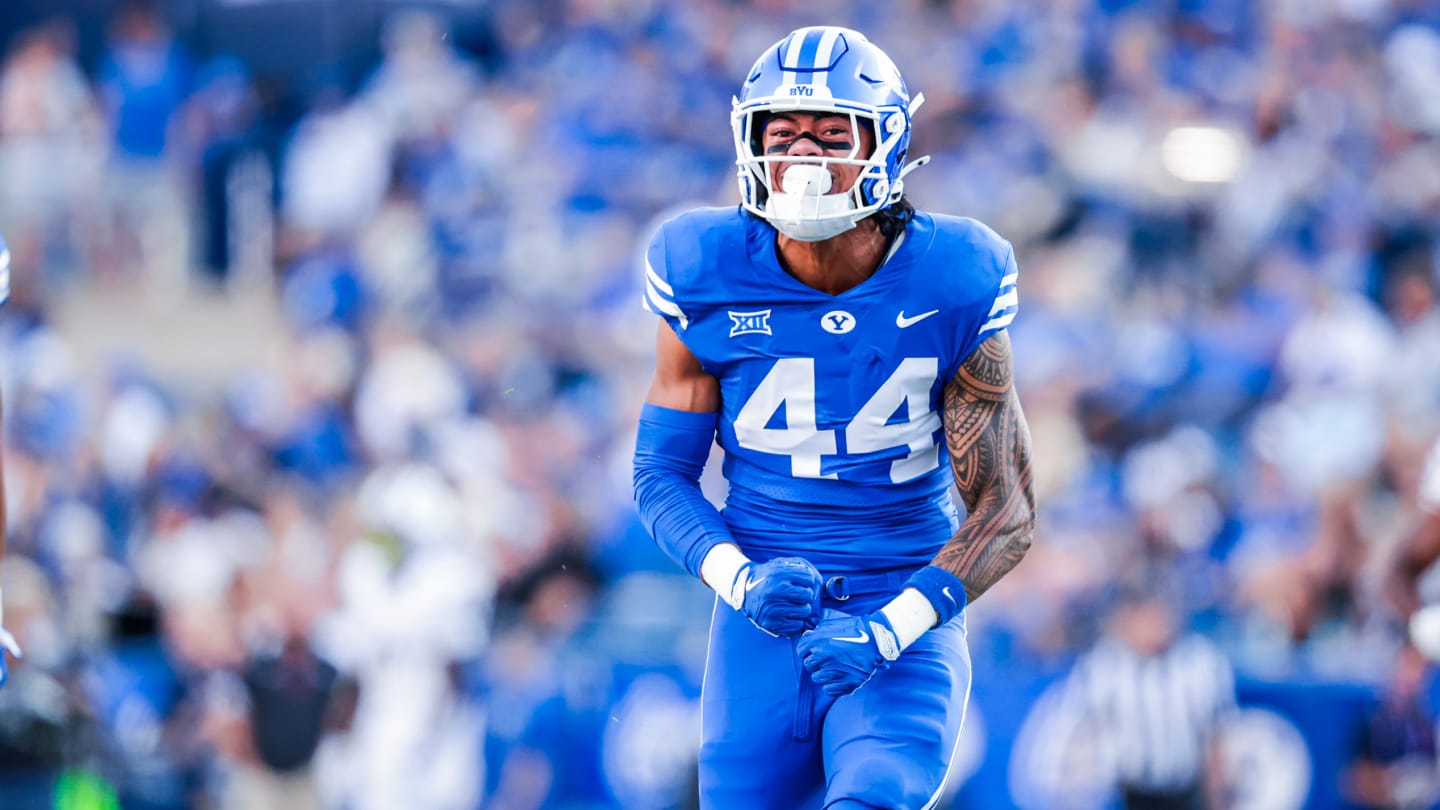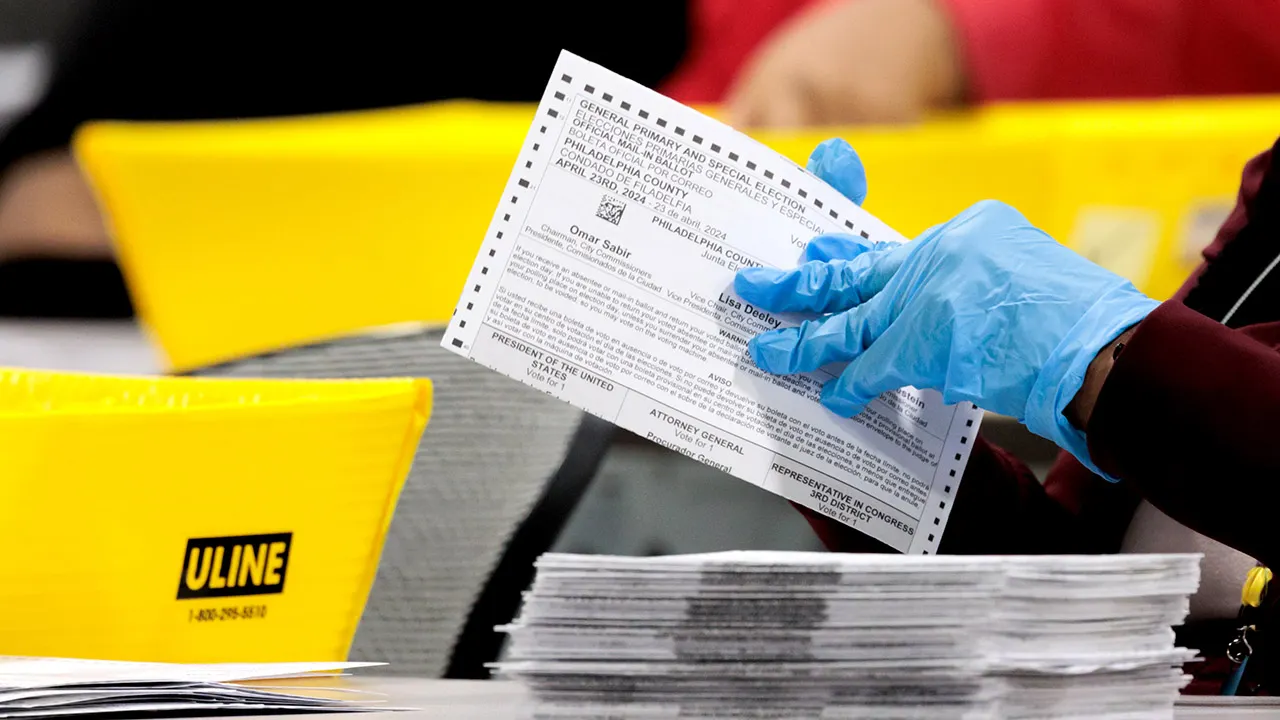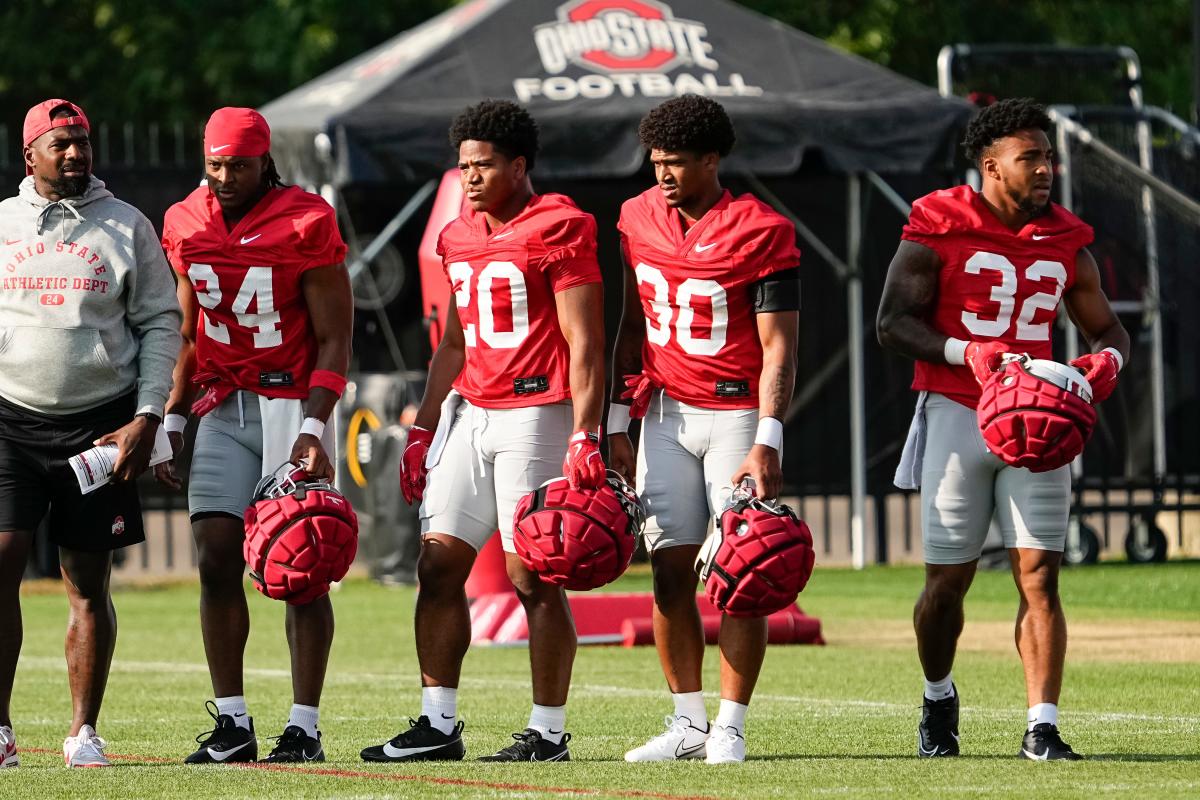Illinois
ZIP code system celebrates its 60th anniversary this summer
:quality(70)/cloudfront-us-east-1.images.arcpublishing.com/shawmedia/VNEP7ZL2VFG5XEGSCLL3OICCZQ.jpg)
This summer marks the 60th anniversary of the ZIP code. It’s something you can celebrate the next time you address an envelope and can’t remember the ZIP.
The ZIP code has become an integral part of U.S. post office procedure and has eased the delivery of billions of pieces of mail since.
ZIP codes have an Illinois tie. J. Edward Day, who was born in Jacksonville, Illinois, on Oct. 11, 1914, oversaw the introduction of the ZIP code while serving as U.S. postmaster general under the Kennedy administration in 1963.
Day graduated from the University of Chicago in 1935 and from Harvard Law School three years later. There, he edited the Harvard Law Review and became acquainted with Kennedy, a fellow law student. After a stint in the Navy during World War II, he landed a position with the high-powered Chicago law firm of Sidley, Austin, Burgess and Harper, where he formed a friendship with Adlai Stevenson.
In 1948, Stevenson was elected governor of Illinois and recruited Day as a legal and legislative assistant. Later, Day moved up to state insurance commissioner. Stevenson unsuccessfully ran for president in both 1952 and 1956.
Day left Illinois to accept an executive position with Prudential in 1953 and originally supported Pat Brown in the 1960 Democratic presidential race. After Brown’s demise, Day became a delegate for Kennedy at the 1960 Democratic National Convention in Los Angeles.
The new president then selected Day for postmaster general, a surprise to many based on Day’s relative obscurity. Day later recalled that he was overlooked at many Washington functions, sometimes mistaken for a security guard. He also had never been a party chairman, a departure from many of his predecessors.
However, Day soon established his presence with a quick wit. He later described his appointment to the Kennedy team by saying, “I went to Harvard, I served in the Navy, and my wife went to Vassar.”
Other quips from Day included his description of his enormous desk in his large Washington office, which he called “a lobby looking for a hotel.” He also told of a meat association’s request for a stamp to commemorate the hamburger, and his reply that, “We had chewed their suggestion over and decided to put it on the back burner.”
Day was charged with slicing the postal system’s $1 billion deficit while streamlining service and boosting company morale. Many of those objectives were met with the ZIP code, an idea that had been discussed by the postal system for years.
The ZIP code, which stands for Zone Improvement Plan, also was instrumental in mechanizing the mail sorting process, which greatly improved service. In addition, the addition of a ZIP code on letters eliminated the need for multiple processing centers, as mail could be directly sent to the location identified in a ZIP code.
Each ZIP code is a five-digit number that is unique to each individual post office, and the first three digits normally indicate the nearest processing center. The first digit is numbered in ascending order from east to west, starting with 0 in New England and 9 on the West Coast.
The ZIP code plan was launched July 1, 1963. To promote the introduction, a sweeping publicity campaign was built around Mr. Zip, an enhanced stick figure that adorned print and television advertisements, posters and buttons.
Day also mailed notifications to every American household, using the Mr. Zip character in what was the largest mass mailing in national history to date. The theme of the campaign was speed, the primary objective of the ZIP code system.
Mr. Zip was used to combat backlash from postal customers who deplored the need to remember another number for an address. Still, the idea caught on, and by the late 1970s, ZIP codes were a part of everyday life.
Day resigned his post less than a month after the introduction of the ZIP code, telling some he found it tough to survive on his $25,000 salary. He returned to his lucrative law practice and lived in the Washington suburbs, spending much time on his farm where he first raised yaks, then llamas and cows.
In 1965, Day wrote “My Appointed Round: 929 Days as Postmaster General,” a humorous look at his time in office. He died Oct. 29, 1996.
• Tom Emery is a freelance writer and historical researcher from Carlinville, Illinois. He can be reached at ilcivilwar@yahoo.com.

Illinois
9 Takeaways From BYU Footballs Decisive Win Over Southern Illinois

BYU did on Saturday night what, apparently, no one in the Las Vegas desert thought they could: dominate SIU by 28 points. BYU’s retribution over the Salukis was a swift and sure 41-13 win that, honestly, wasn’t as close as the score indicated. Some say you can’t learn anything from a win over an FCS opponent but that wont stop us from trying. With that said, here are nine things we learned from BYU’s 1-0 start.
1. Jay Hill: Football Coach
If you are reading this, odds are you have called in sick for something much less than a heart attack. Some spent most of Friday night fearing Coach Hill’s life was in jeopardy only for him to have a headset on in the BYU press box the following night. That kind of dedication to BYU football is enough to make you want to run through a brick wall.
2. Its time to give Jake Retzlaff a fresh start
Go with me on a hypothetical journey. Imagine a world where Kedon Slovis never gets hurt and yesterday was Jake Retzlaff’s first start at BYU. Imagine a world where all you knew about him was that he was the no. 1 junior college quarterback in his class and had a full year to grow into a P4 starting quarterback. Now imagine that Jake Retzlaff put up the exact same stat line in his first start: 66.7% completion percentage, 348 yards, 12 yards per attempt, 3 touchdowns, and 0 interceptions. What would your impressions of him be if that’s all you knew?
An abysmal 2023 aside, Jake Retzlaff was awesome last night. Yes it was an FCS opponent, but plenty of other quarterbacks played FCS teams this week and didn’t play as well as Jake. Retzlaff’s 89.0 PFF grade ranked 16th nationally and 3rd in the BIG12 through week 1 behind only Shadeur Sanders and Noah Fifita. His completion percentage adjusted for drops was 73.3% with an average depth of target (ADOT) of 13.5 yards. The last two instances of a BYU quarterback throwing for a better adjusted completion percentage on a deeper ADOT was Jaren Hall against Utah Tech in 2022 and Zach Wilson vs North Alabama in 2020.
LET IT FLY @jretz11!!
📺: https://t.co/zDOxM9A89H pic.twitter.com/Pgc2y0DEU0
— BYU FOOTBALL (@BYUfootball) September 1, 2024
The film is just as impressive as the stats. Jake showed why he won the starting job with throws like the one above. Watch it. If you are not impressed, watch it again. This ball travelled over 60 yards in the air and right into Jojo Phillips chest for a touchdown. Even the camera man was evidently shocked that ball traveled that far. There is only one quarterback in the state, let alone the BYU roster, that can make that throw, and he made it twice on Saturday.
There were misses to be sure, but second viewing, those misses had more to do with receiver timing (50% of the fall camp reps will do that) and the degree of difficulty of throws rather than the mechanical issues and poor decision making that plagued him a year ago. Most importantly, Retzlaff had zero turnover-worthy plays and made every layup in yesterday’s game, going 4/4 on throws behind the line of scrimmage. It’s certainly not time to crown Jake as the next great BYU quarterback, but coming into the game, BYU fans weren’t sure if Jake Retzlaff was capable of being an FBS level player. At a minimum, his performance put those questions to bed. Time will tell if this was a one-hit wonder or if Retzlaff is a legitimate P4 quarterback, but yesterday was good enough to earn Jake a second chance at a first impression.
3. Chase Roberts is WR1
Chase Roberts message to his Quarterback was evident in his play: “I am available whenever you need me.” Roberts had 7 catches on 8 targets and was 2/2 on contested catch opportunities. All 7 catches went for first downs including two crucial 4th down conversions. The eye test showed Roberts being a big-bodied receiver with sure hands, improved speed and elusiveness to be a true WR1 in the Big12 conference.
4. BYU’s corners are very young
Jakob Robinson did Jakob Robinson things last night. He was targeted just once in 20 attempts, and that one attempt resulted in an interception. The stat sheet looked good for the rest of the BYU secondary, but the film showed plenty of youth . I counted at least three different times an SIU wide receiver got behind the BYU corner group, even if the passes fell incomplete. That makes sense. Evan Johnson, Therrian Alexander, Jonathon Kabeya and Marque Collins were all playing their first meaningful snaps at the FBS level, but the next 11 games will feature quarterbacks that can expose a young secondary if they don’t grow up quick.
5. BYU’s front seven looked stout for week one
BYU was gashed by SIU quarterback DJ Williams’ scrambling ability, but allowed just 2 yards rushing to everyone else on 10 carries. Defensive tackles Blake Mangelson and John Nelson were the stars of the show, accounting for 4 of BYU’s 10 total pressures. That’s a positive sign for a BYU team that has gotten little, if any, meaningful production from the interior defensive line since Khyris Tonga. Isaiah Bagnah and Ephraim Asiata both showed enough flashes opposite Tyler Batty to inspire confidence in the defensive line’s progress this offseason.
The linebackers were stellar all night long, while all 19 “stops” (a play that constitutes a failure for the offense) were forced by the linebackers and defensive line. BYU forced a punt or turnover on 9 of 11 SIU possessions, allowing an average of just 3.8 plays on those 9 drives, largely due to the pressure applied by the BYU front seven.
6. You can catch a football, side step a defender, switch the ball to the opposite hand, and fumble without ever possessing the football
Who knew?
7. There seems to be a drop-off between LJ Matin and the rest of the running backs
The coaching staff was clearly trying to limit LJ Martin’s reps as he recovers from an offseason shoulder injury, but at a certain point, they couldn’t keep him off the field. Martin averaged a near yard more per carry then BYU’s three other running backs and seemed to have the combination of vision, elusiveness and power that made Tyler Allgeier a BYU legend. If he can stay healthy, BYU’s run game will be better. But at 3.8 yards per carry as a team, BYU’s ground game didn’t show enough last night to warrant a ton of optimism without him.
8. The offensive line has improved from last year
The offensive line had a really strong showing. SIU blitzed on 16 of 35 dropbacks, but managed only 7 pressures and on the night. For reference, against SUU last season, SUU generated 10 pressures on 32 drop backs, despite blitzing only 8 times. No single lineman allowed more than 2 pressures according to PFF, while 5 of the top 6 lineman posted a grade of 74.6 or higher. Perhaps most notably, left tackle Caleb Etienne graded out as the third best offensive player last night, behind only Jake Retzlaff and Chase Roberts. Improvement indeed.
9. BYU football’s trajectory is pointed up
BYU did what what P4 teams should do to FCS teams, and that is a massive improvement over where they were a year ago. BYU’s last game versus an FCS opponent featured a nearly identical score with a completely opposite feel. In 2023, BYU outgained SUU by just 48 yards and managed 46 rushing yards on 2 yards per carry. Fast forward one year, and BYU dominated a significantly better FCS team in every facet of the game. BYU outgained SIU by 296 yards, more yards than BYU gained in 7 of their 12 games in 2023. They eclipsed the 400 yard mark for the first time in 644 days and held an opposing offense to under 235 yards for only the second time in the last four seasons.
Does any of this mean BYU will imminently compete for a Big12 title? No. But there is no shame in finding satisfaction in the idea that for the first time in nearly 2 years, BYU looked like a competent, complete football team.
Illinois
11 True Freshmen Played for BYU Against Southern Illinois

When BYU released its depth chart for Southern Illinois, 10 true freshmen were listed on the depth chart. BYU offensive coordinator Aaron Roderick said everyone on the depth chart would play and he was right. Against Southern Illinois, 11 true freshmen played on either offense or defense for BYU. 5 out of the 11 played 10 or more snaps, led by former four-star recruits Faletau Satuala and Cody Hagen.
- Faletau Satuala (S) – 14 defensive snaps played
- Cody Hagen (WR) – 13 offensive snaps played
- Therrian Alexander (CB) – 12 defensive snaps played
- Tommy Prassas (S) – 11 defensive snaps played
- Ephraim Asiata (DE) – 10 defensive snaps played
- Tei Nacua (WR) – 8 offensive snaps played
- Jonathan Kabeya (CB) – 6 defensive snaps played
- Viliami Po’uha (DE) – 3 defensive snaps played
- Orion Maile-Kaufusi (DE) – 3 defensive snaps played
- Dom McKenzie (WR) – 1 offensive snap played
- Ryner Swanson (TE) – 1 offensive snap played
Some of the most talented players in the BYU football program are freshmen. If BYU can keep this core of young players together, it would bode really well for the future of the program. Competing for a Big 12 championship in 2024 is probably unrealistic, but competing for a championship by 2026 should be the goal for everyone in the program. This young core has the chance to get BYU to that level if they reach their potential.
Faletau Satuala and Cody Hagen will be fascinating to follow in 2024. They are both in very deep rooms and, on the surface, it doesn’t look like they will be needed to play a lot unless injuries occur. They are both so talented, however, that they might be impossible to keep off the field by season’s end.
Hagen was a contributor on special teams, so it doesn’t look like they plan to redshirt him in 2024. Hagen could start to make the case to be in the regular rotation at wide receiver. Faletau Satuala played meaningful snaps against the Salukis. He was the first free safety off the bench after Tanner Wall and Micah Harper.
This list also highlights the importance of recruiting high-caliber recruits. The higher the star rating, the more likely they are to be ready to contribute early. It’s no surprise that the first few names on the list were highly-coveted recruits.
Illinois
Health officials in Wisconsin, Illinois report 3 West Nile virus deaths

Two people in eastern Wisconsin and one person in northeastern Illinois have died of West Nile virus, according to health officials.
A third person in Wisconsin also has been hospitalized because of the mosquito-borne illness, the Wisconsin Department of Health Services said in a release.
That state’s cases involve residents of Outagamie, Fond du Lac and Brown counties.
In Lake County, Illinois, three people tested positive for the virus over the last seven days, the Lake County Health Department and Community Health Center said in a release.
One of the victims experienced symptom onset in mid-August and died shortly thereafter.
West Nile virus is commonly spread through the bite of an infected mosquito. While most people don’t experience symptoms, about 1 in 5 can develop a fever, headache, body aches, vomiting, diarrhea or rash, according to the U.S. Centers for Disease Control and Prevention. About 1 out of 150 infected people develop a serious, sometimes fatal, illness.
An average of 18 cases of West Nile virus are reported in Wisconsin each year, and the virus has been detected this year in mosquitoes, animals and healthy blood donors whose blood screened positive for West Nile virus, the state said.
West Nile virus was first reported in the U.S. in 1999 in New York. It gradually spread across the country. In 2003, there were nearly 10,000 cases.
-

 Connecticut1 week ago
Connecticut1 week agoOxford church provides sanctuary during Sunday's damaging storm
-

 Politics1 week ago
Politics1 week ago2024 showdown: What happens next in the Kamala Harris-Donald Trump face-off
-

 Politics1 week ago
Politics1 week agoTrump taunted over speculated RFK Jr endorsement: 'Weird as hell'
-

 World7 days ago
World7 days agoPortugal coast hit by 5.3 magnitude earthquake
-

 Politics1 week ago
Politics1 week agoWith 13 days until voting starts, 'election season' kicks off sooner than you think
-

 Politics7 days ago
Politics7 days agoWhy won't Pennsylvania voters have results on Election Night?
-

 Politics1 week ago
Politics1 week agoWhite House lawyers who advised Reagan, Bush endorse Harris over Trump in 2024 showdown
-

 World1 week ago
World1 week agoSolingen stabbing: Three killed in attack at Germany festival



















